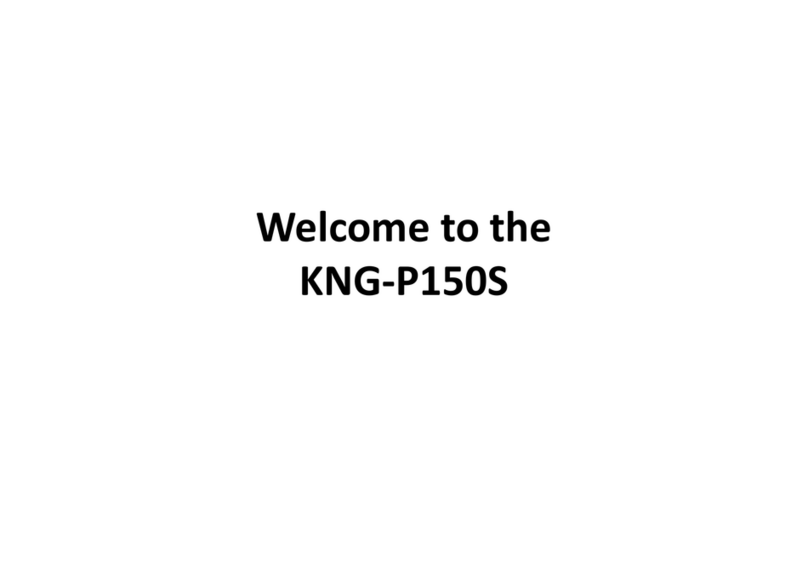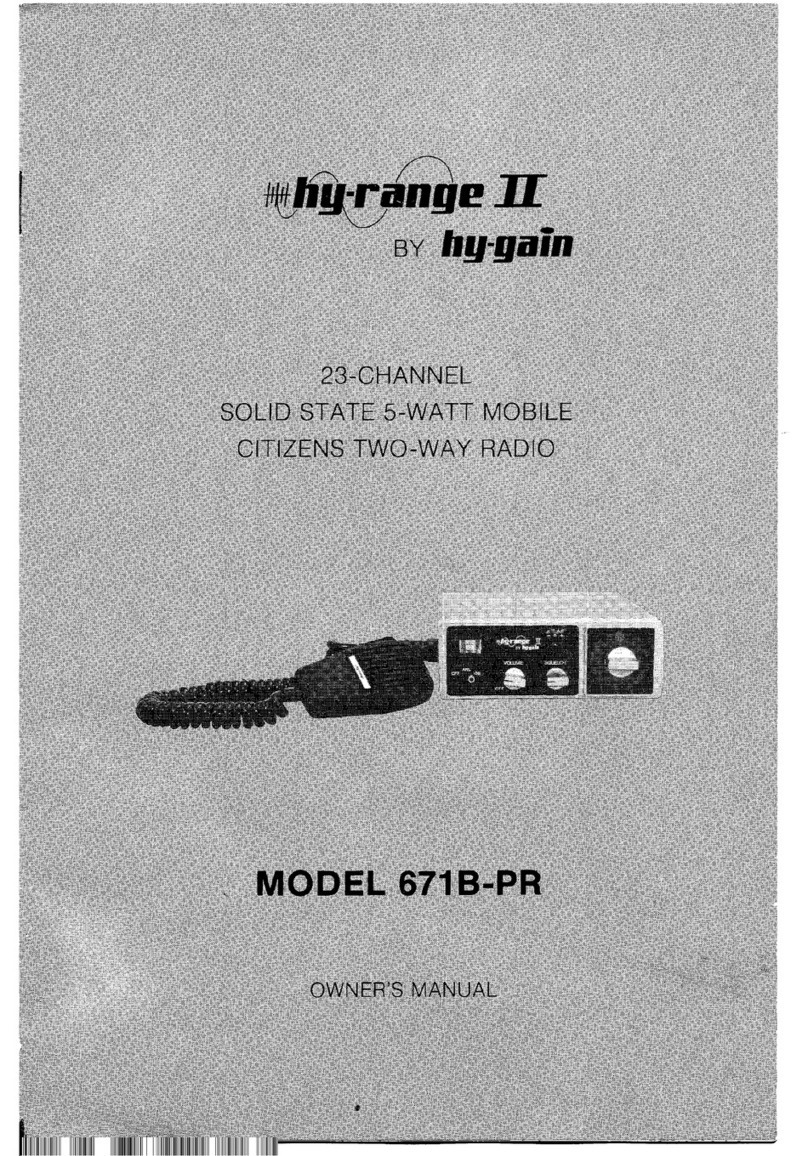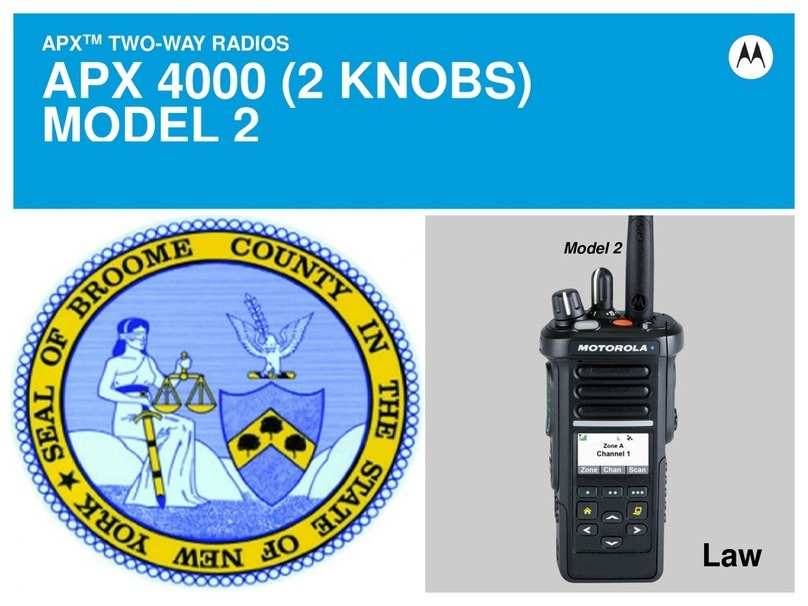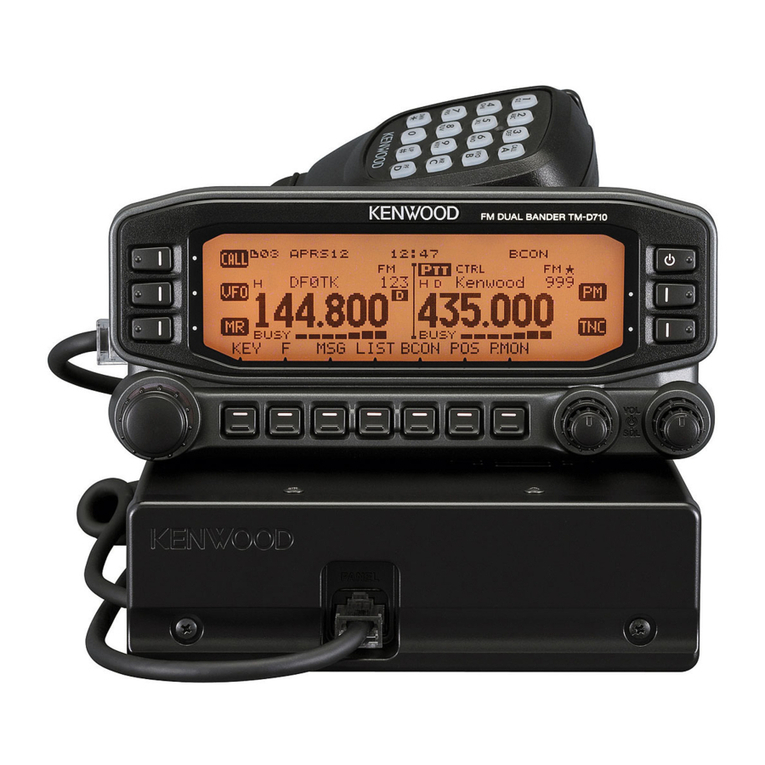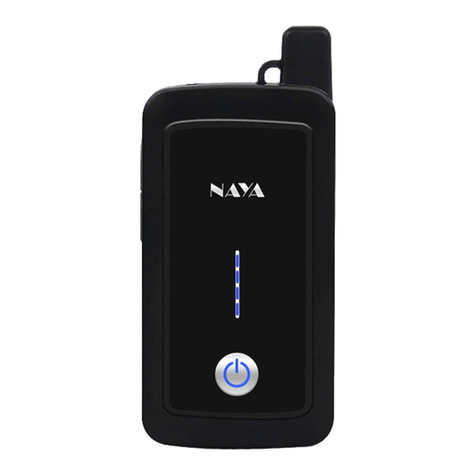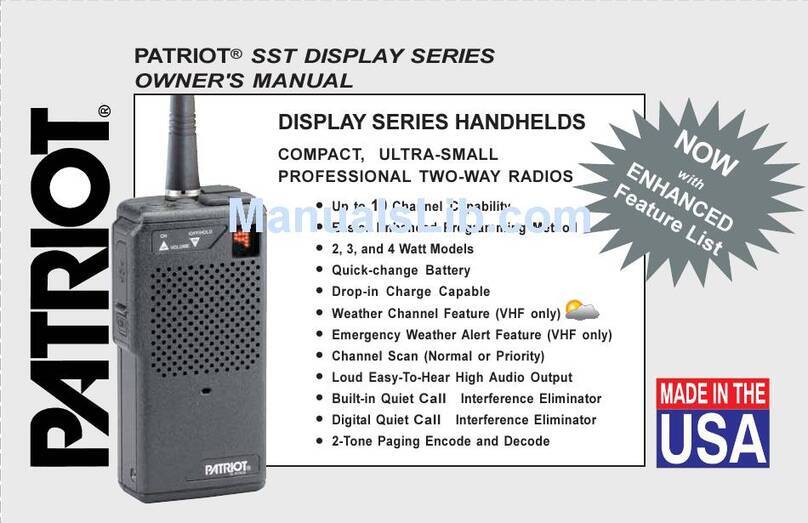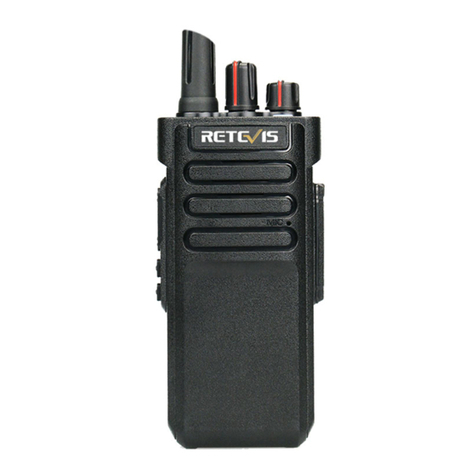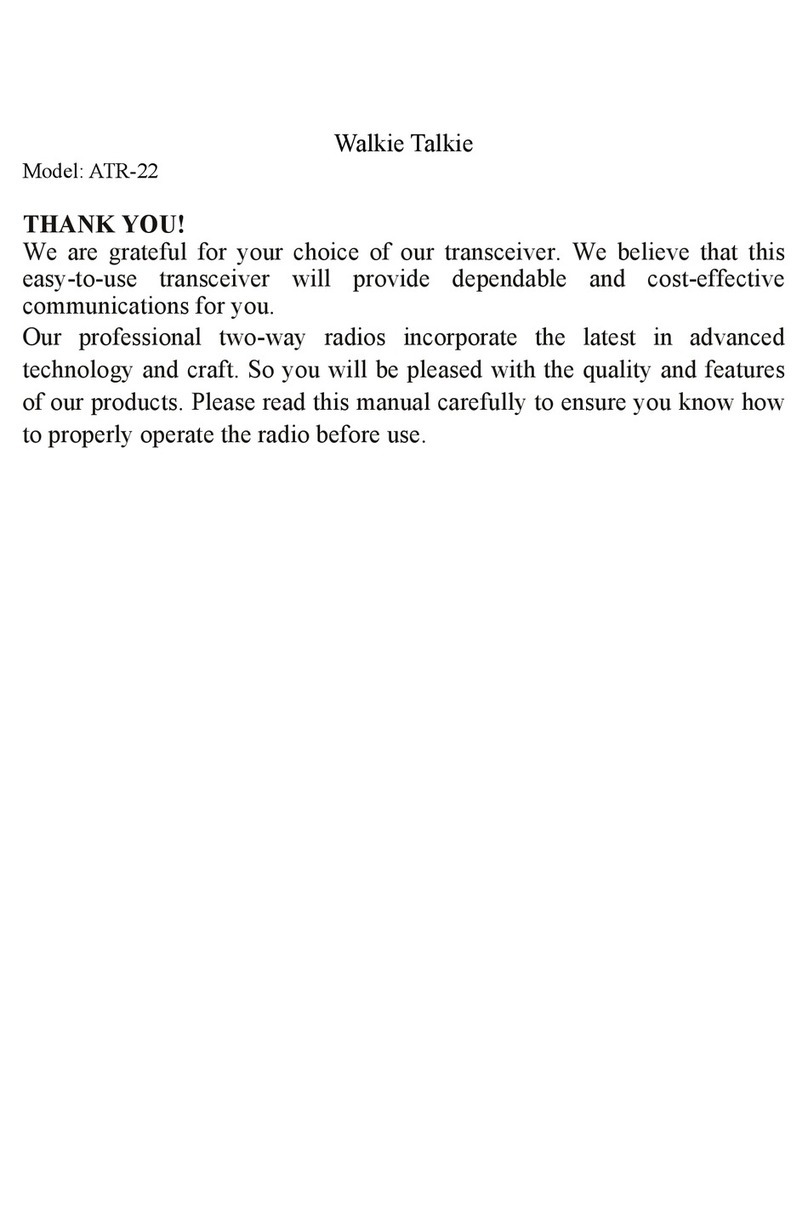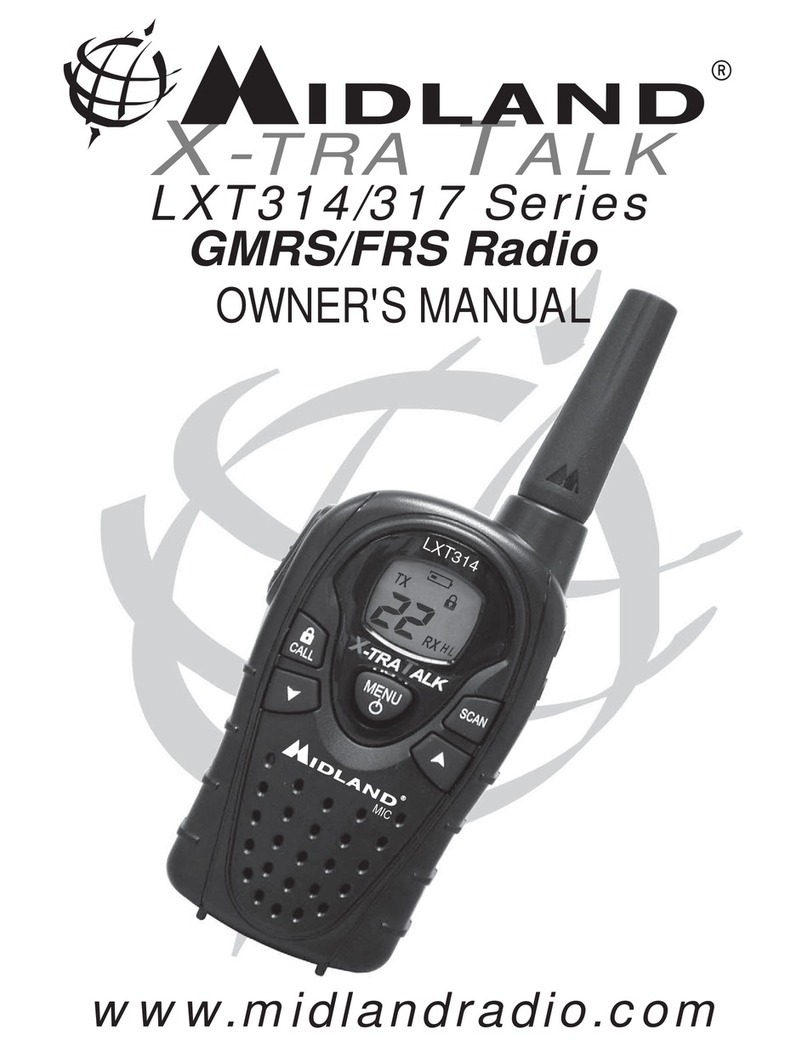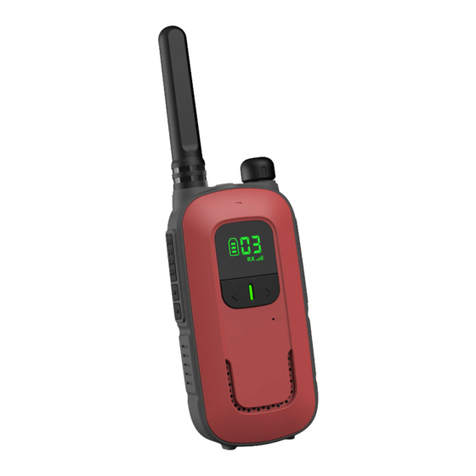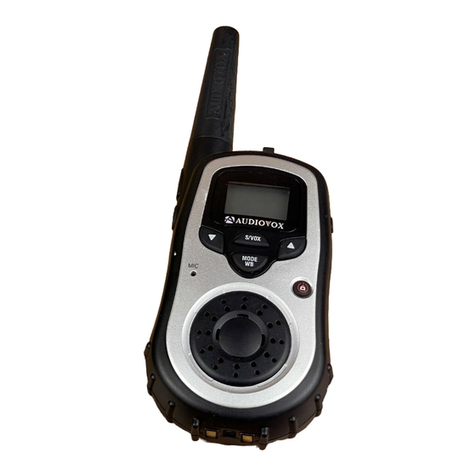BK Radio KNG M-150 User manual


Many factors are taken into consideration when implementing features
and functionality of KNG Series radios. Easy of use and customer
requirements are among the most important to us. Most enhancements
are achieved thru radio rmware updates.
Current rmware and radio editor versions, along with the latest user
manuals and addendums, are available for download in the support section
of the RELM Wireless web site.
We recommend joining our e-mail list to keep informed of updates and
enhancements on all your RELM Wireless and BK Radio products.
Visit us at:
www.relm.com


Contents
Introduction.............................................................................................. 1
FCC Requirements .................................................................................. 1
Radio Controls......................................................................................... 8
LCD Touch Screen................................................................................. 10
Microphone Controls ............................................................................ 19
Function Selection ................................................................................ 21
Channel/Zone Selection Options ......................................................... 26
Basic Operation..................................................................................... 29
Command Zone Operation ................................................................... 31
Building a Command Zone [CHAN+] .................................................. 31
Editing a Command Zone [CHAN-]..................................................... 32
Code Guard/NAC Operation ................................................................. 33
Code Guard Transmit.......................................................................... 33
Code Guard Receive........................................................................... 34
Analog Squelch Control ...................................................................... 34
APCO Project 25 Digital Squelch Control ........................................... 34

Mixed Mode Operation.......................................................................... 36
Trunking Channel Basic Operation...................................................... 38
Scan Options ......................................................................................... 40
Channel Scan [SCAN]......................................................................... 40
Channel Scan List [SCN+] .................................................................. 41
Talkback Scan..................................................................................... 42
Vote Scan [Requires Option KZA0581]............................................... 42
Dual Mode Scan [DSCN] .................................................................... 43
Priority Scan [PSCN]........................................................................... 44
Priority Channel Select [PRI]............................................................... 45
Zone Scan [ZSCN].............................................................................. 47
Zone Scan List [ZSC+]........................................................................ 47
Pick List Options ................................................................................... 48
TX/RX CxCSS Picklist [TXCG] [RXCG] .............................................. 49
TX/RX Network Access Code Picklist [TNAC] [RNAC] ....................... 49
Talk Group ID Picklist [TGID] .............................................................. 50
Encryption Key Picklist [KEY].............................................................. 50
Keyset Picklist [KSET]......................................................................... 51

Unit-to-Unit Call Options....................................................................... 52
Emergency Signalling Options ............................................................ 55
Encryption Operation............................................................................ 57
Required Setup ................................................................................... 57
Basic Operation................................................................................... 58
Transmit Secure [SEC] ....................................................................... 59
Transmit Encryption Key Selection [KEY] ........................................... 59
User Selectable Encryption Keyset [KEYST]...................................... 60
Rekey Request [RKEY]....................................................................... 61
Keyset Viewing and Selecting [KSET] ................................................ 62
Zeroizing [ZERO] ................................................................................ 62
Messaging ............................................................................................. 63
Text Messaging [TXT] ......................................................................... 63
User Status Messaging [STS]............................................................. 67
Paging and Call Alert ........................................................................... 70
Conventional Two-Tone/DTMF/MDC1200 Paging [MUTE] ................ 70
Call Alert Paging [ALRT] .................................................................... 71
Radio Check [RCHK] ......................................................................... 72

Radio Inhibit/Enable [INH]/[UNINH]...................................................... 74
Other Options and Functions............................................................... 76
Backlight [LITE]................................................................................... 76
Busy Channel Operation..................................................................... 77
Channel Select [CHAN]....................................................................... 78
Cloning................................................................................................ 78
Control Lockout [LCK]......................................................................... 79
Keypad Programming ......................................................................... 80
Monitor [MON]..................................................................................... 80
Nuisance Channel Delete [DEL] ......................................................... 81
Radio info............................................................................................ 82
Repeater Talkaround [T/A] .................................................................. 82
Squelch Adjust [SQL] .......................................................................... 82
Site Display [STDS]............................................................................. 83
Site Lock [STLK] ................................................................................. 83
Site Search [STSR]............................................................................. 84
Surveillance Mode [SURV].................................................................. 84
Transmit Digital [TXAD]....................................................................... 84
Transmit Power [PWR]........................................................................ 85

Keypad Programming ........................................................................... 86
Keypad Programming Navigation ....................................................... 87
Entering Keypad Programming Mode................................................. 88
Global, System, Zone and Channel Parameters................................. 89
Global Settings.............................................................................. 89
Displayed Information Lines ........................................................ 90
User Password ............................................................................ 91
System Settings ............................................................................ 92
System Priority 1 or 2 Channel.................................................... 92
Tx on Priority 1 Channel.............................................................. 92
Zone Settings................................................................................. 93
Add Zone..................................................................................... 93
Delete Zone................................................................................. 93
Edit Zone ..................................................................................... 93
Zone Label................................................................................... 94
Zone Priority 1 or 2 Channel........................................................ 94
Zone Tx Priority 1 Channel......................................................... 94
Channel Settings........................................................................... 95
Add Channel................................................................................ 95
Delete Channel............................................................................ 95

Edit Channel................................................................................ 96
Channel Label ............................................................................ 96
Rx Frequency ............................................................................. 96
Rx Mode ..................................................................................... 96
Rx Guard .................................................................................... 96
RX NAC ...................................................................................... 97
Squelch Mode ............................................................................. 97
Bandwidth ................................................................................... 97
Tx Power .................................................................................... 98
Tx Frequency .............................................................................. 98
Tx Mode ...................................................................................... 98
Tx Guard ..................................................................................... 98
Tx NAC ....................................................................................... 99
TGID ........................................................................................... 99
P25 ID Unit Call/Receive List.......................................................... 100
User Selectable Code Guards........................................................ 101
User Selectable Network Access Codes....................................... 104
User Selectable Talkgroup IDs....................................................... 104
Warranty ............................................................................................... 105

- 1 -
KNG Mobile Manual
Introduction
Congratulations on your purchase of the BK Radio KNG Mobile radio from RELM
Wireless.
The KNG APCO Project 25 radio offers an array of programmable functionality to
help radio users get the most out of their portable communications. Check with your
RELM/BK Radio dealer or communications ofcer for information on the programmed
functions of your radio prior to operation.
This manual contains information concerning the operation procedures for the BK
Radio KNG Mobile radio. The KNG has been designed to meet the tough requirements
of today’s communications environment. Please take a moment to read the information
in this manual so you can get optimum performance from your new radio.
FCC Requirements
Your radio must be properly licensed by the Federal Communications Commission
prior to use. Your BK Radio dealer can assist you in meeting these requirements. Your
dealer will program each radio with your authorized frequencies, signaling codes, etc.,
and will be there to meet your communications needs as your system expands.

- 2 -
KNG Mobile Manual
Safety Precautions
Do not operate the transmitter in close proximity to blasting•
caps.
Do not operate the radio in an explosive atmosphere•
(petroleum fuels, solvents, dust, etc.).
Do not operate the transmitter if a person outside the vehicle•
is less than three feet from the antenna or touching the
antenna.
RF ENERGY EXPOSURE AWARENESS AND CONTROL INFORMATION,
AND OPERATIONAL INSTRUCTIONS FOR FCC OCCUPATIONAL USE
REQUIREMENTS
BEFORE USING YOUR MOBILE 2-WAY RADIO, READ THE INFORMATION
BELOW WHICH CONTAINS IMPORTANT OPERATING INSTRUCTIONS FOR SAFE
USAGE AND RF ENERGY AWARENESS AND CONTROL INFORMATION FOR
COMPLIANCE WITH RF ENERGY EXPOSURE LIMITS IN APPLICABLE

- 3 -
KNG Mobile Manual
National and International Standards
NOTICE: This radio is intended for use in occupational/controlled conditions, where
users have full knowledge of their exposure and can exercise control over their
exposure to meet FCC limits. This radio device is NOT authorized for general
population, consumer, or any other use.
This 2-way radio uses electromagnetic energy in the radio frequency (RF) spectrum
to provide communications between two or more users over a distance. It uses radio
frequency (RF) energy or radio waves to send and receive calls. RF energy is one
form of electromagnetic energy; other forms include, but are not limited to, sunlight
and x-rays. RF energy, however, should not be confused with these other forms of
electromagnetic energy, which when used improperly, can cause biological damage.
Very high levels of x-rays, for example, can damage tissues and genetic material.
Experts in science, engineering, medicine, health and industry work with
organizations to develop standards for exposure to RF energy. These standards
provide recommended levels of RF exposure for both workers and the general
public. These recommended RF exposure levels include substantial margins of
protection. All 2-way radios are designed, manufactured, and tested to ensure they
meet government established RF exposure levels. In addition, manufacturers also
recommend specic operating instructions to users of 2-way radios.
These instructions are important because they inform users about RF energy
exposure and provide simple procedures on how to control it. Please refer to the

- 4 -
KNG Mobile Manual
following websites for more information on what RF energy exposure is and how to
control your exposure to assure compliance with established RF exposure limits.
http://www.fcc.gov/oet/rfsafety/rf-faqs.html
http://www.osha.gov/SLTC/radiofrequencyradiation/index.html
Federal Communications Commission Regulations
The FCC rules require manufacturers to comply with the FCC RF energy exposure
limits for mobile 2-way radios before they can be marketed in the U.S. When 2-way
radios are used as a consequence of employment, the FCC requires users to be
fully aware of and able to control their exposure to meet occupational requirements.
Exposure awareness can be facilitated by the use of a product label directing users to
specic user awareness information. Your BK Radio 2-way radio has an RF exposure
product label. Also, your BK Radio owner’s and service manuals include information
and operating instructions required to control your RF exposure and to satisfy
compliance requirements.
Compliance with RF Exposure Standards
Your BK Radio 2-way radio is designed and tested to comply with a number of
national and international standards and guidelines (listed below) for human exposure

- 5 -
KNG Mobile Manual
to radio frequency electromagnetic energy. This radio complies with the IEEE and
ICNIRP exposure limits for occupational/controlled RF exposure environment at
operating duty factors of up to 50% talk-50% listen and is authorized by the FCC for
occupational use only. In terms of measuring RF energy for compliance with the FCC
exposure guidelines, your radio antenna radiates measurable RF energy only while it
is transmitting (during talking), not when it is receiving (listening) or in Standby Mode.
Your BK Radio 2-way radio complies with the following RF energy exposure
standards and guidelines:
United States Federal Communications Commission, Code of Federal Regulations;
47 CFR §§ 1.1307, 1.1310, 2.1091 and 2.1093
American National Standards Institute (ANSI) / Institute of Electrical and Electronic
Engineers (IEEE) C95. 1-1992
Institute of Electrical and Electronic Engineers (IEEE) C95.1-1999 Edition
Industry Canada Compliance
This Class B digital apparatus complies with Canadian ICES-003.
Cet appareil numerique de la classe B est conforme à la norme NMB-003 Canada.

- 6 -
KNG Mobile Manual
RF Exposure Compliance and Control Guidelines
To control exposure to yourself and others and to ensure compliance with the RF
exposure limits, always adhere to the following procedures.
Guidelines:
User awareness instructions must accompany device when transferred•
to other users.
Do not use this device if the operational requirements described herein•
are not met.
Operating Instructions:
Transmit no more than the rated duty factor of 50% of the time. To transmit (talk),
push the Push-To-Talk (PTT) button. The red LED will illuminate when the radio is
transmitting. To receive calls, release the PTT button. The red LED will extinguish
when the radio stops transmitting. Transmitting 50% of the time, or less, is important
because this radio generates measurable RF energy exposure only when transmitting
(in terms of measuring for standards compliance).
Transmit only when persons around the vehicle are at least 3 feet (90 centimeters)
away from the vehicle with a properly installed antenna. This separation distance will
ensure that there is sufcient distance from a properly installed (according to installation
instructions) externally-mounted antenna to satisfy the RF exposure requirements in
the standards listed above.

- 7 -
KNG Mobile Manual
The AMBE® voice compression software included in this product is protected by
intellectual property rights including patent rights, copyrights and trade secrets of Digital
Voice Systems, Inc. The user of this software is explicitly prohibited from attempting
to decompile, reverse engineer, or disassemble the object code, or in any other way
convert the object code into a human-readable form. This software is licensed solely
for use within this product. US Patent Nos. #6,912,495 B2, #5,870,405, #5,826,222,
#5,754,974, #5,715,365, #5,701,390, #5,649,050, #5,630,011, #5,581,656, #5,517,511,
#5,491,772, #5,247,579, #5,226,084, and #5,195,166.
Contact Information
For additional information on exposure requirements or other information, visit
website http://www.relm.com.

- 8 -
KNG Mobile Manual
Radio Controls
Channel Select
OK
BK RADIO
Channel 16
Secure One
155.645 MHz
MON
P
1
TXD
SCAN ZONE MENU
Z
P
P
H
✓
Ø
ON/OFF - Volume Emergency Button
LCD Screen
Menu NavigationMic Jack Home Button
USB Port
Programmable Buttons Menu Select
LED
On / Off / Volume: This control is both a push on/off button and a rotate volume
knob. Pushing the button in and releasing will toggle the state of the mobile from on to
off and back. Rotating this knob will increase or decrease the audio volume setting.
M
E
N
U

- 9 -
KNG Mobile Manual
USB Port: This is a USB client port and is used for programming and conguring the
radio with the Windows PC programming software.
LCD Touch Screen: The LCD screen is used to show radio status and operating
condition as well as receive input from the user via programed buttons. Up to three lines
of information can be displayed in the main display window. (See Display Options)
LED: The LED indicator is used to show various operational states such as active
receive and active transmit.
Channel Select: The Channel Select knob may be programmed via PC to select
channels or zones. Turn the knob to select the desired channel or zone.
Emergency Button: The orange programmable function is typically assigned to enter
the Emergency Operation mode but can be programmed for other functions.
(See Button Options)
Microphone Jack: Connector for attaching the microphone.
Programmable Buttons: Up to four touch-activated buttons can be programmed to
the LCD display. (See Button Options)
Menu Navigation: The menu navigation pad is used to navigate the menu system.
Use the right/left buttons to highlight a menu selection. Press OK to select the
currently highlighted menu item.
Home: When navigating a menu pressing the Home button will exit the menu mode
and return to normal radio operation.

- 10 -
KNG Mobile Manual
LCD Touch Screen
KNG mobile radios are equipped with a programmable touch sensitive display.
The bottom line of the display is populated with programmable buttons. Button
functions are assigned using the PC radio editor. Buttons are toggled off or on by
pressing the displayed icon.
The top line displays radio activity such as transmit and receive indications, scan
operations, etc.
The middle section shows programmed information for the selected channel.
(See Channel Information Display Options)
Channel 16
Secure One
155.645 MHz
Z
P
P
H✓
P1
TXD
Ø
MON SCAN ZONE T/A
Channel 16
Secure One
155.645 MHz
Programmable Buttons
Status Indicators
Programmable Channel
Information
M
E
N
U

- 11 -
KNG Mobile Manual
Status Indicators
Receiver Signal Strength
RXD, RXA Receive Digital, Receive Analog, Hold Time Active
TXD, TXA Transmit Digital, Transmit Analog
H, L High or Low Transmit Power
P1, P2 Priority 1 Channel, Priority 2 Channel
Selected channel is set to transmit encrypted
or when Rx incoming signal is encrypted
Scanned Channel
C
Channel Scan On
(continued)
Other manuals for KNG M-150
2
This manual suits for next models
2
Table of contents
Other BK Radio Two-way Radio manuals

